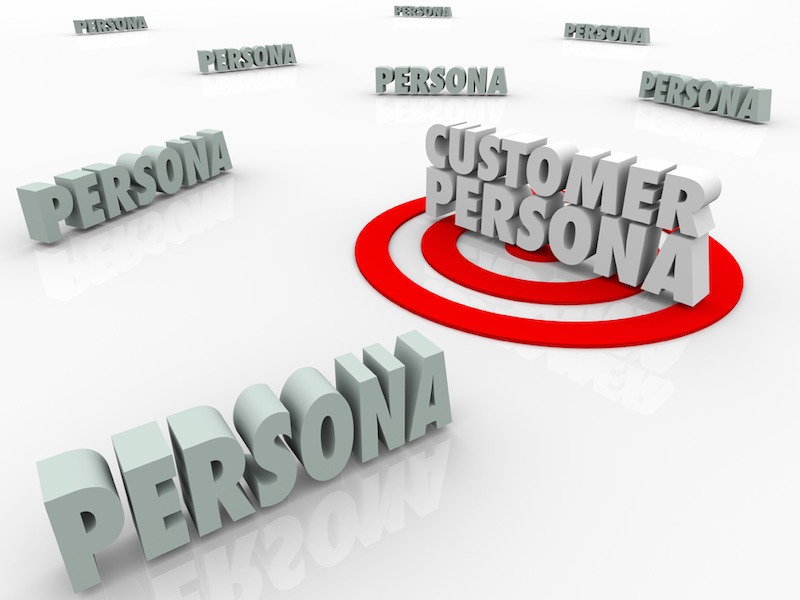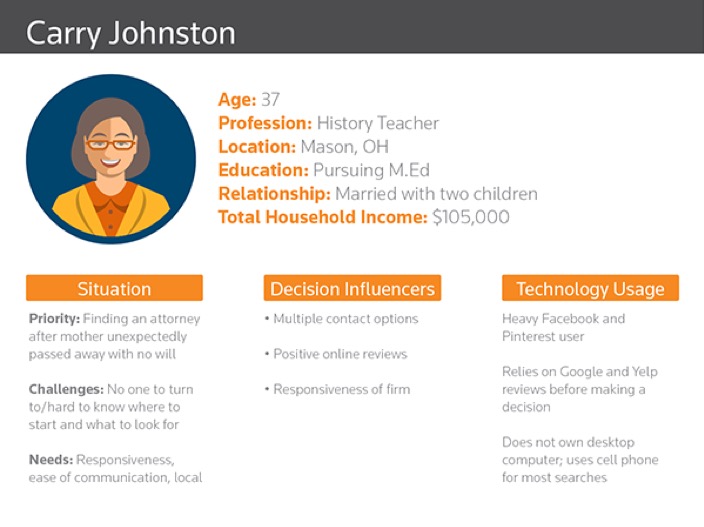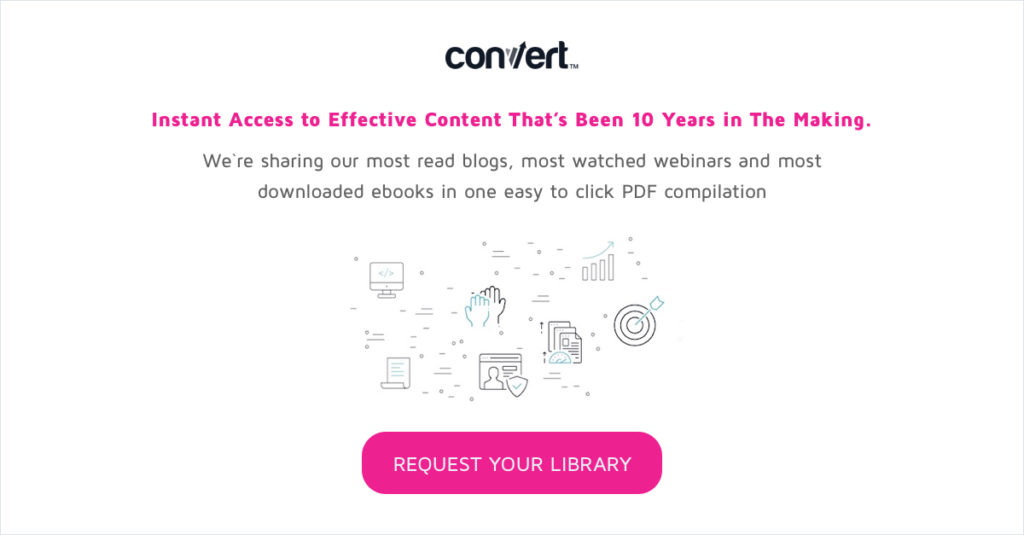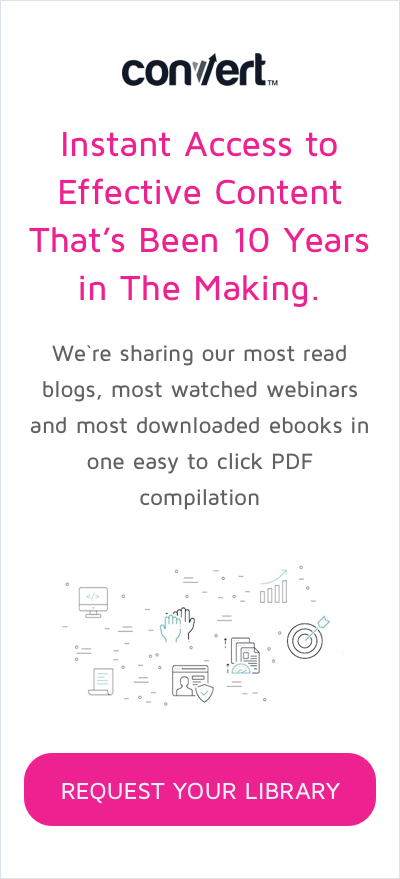5 Steps to Create the Perfect Customer Persona for Your Business

Content marketing has dramatically transformed over the past few decades. While some old-school business strategies still remain relevant today, there’s a bunch of new and more impactful methods that can help you achieve your business goals.
One of the most efficient and cost-effective ways to boost your marketing efforts is by creating customer personas. Without building these personas, it’s difficult to figure out who you’re targeting and you won’t be able to personalize their shopping experiences.
Creating customer personas helps you figure out how your customers engage with your business, what they need, and what common challenges they face.
Before moving on to how you can create customer personas, let’s first take a closer look at what exactly they are.
What is a Customer Persona?
A customer persona is a simulated model that represents the primary attributes/features of a large segment of your customer base. This is defined based on the data you collect from surveys, web analytics, and user research.
Customer personas provide you with insights into the likes and dislikes of your target audience. They can help you understand your customers better and address their problems in an efficient manner. They also help you to target specific audience segments for particular campaigns, initiatives, and projects.
Now that you know what customer personas are, let’s look at how you can build them. Here are 5 simple steps to create the perfect customer persona for your business.
How to Create a Customer Persona
Let’s get started with the step-by-step process for building a buyer persona framework.
1. Reach Out to Your Existing Customers
The best way to get started with creating customer personas for your business is to reach out to your existing customers. By doing so, you might end up finding out interesting details about your customers that you didn’t know before. This can help you understand what your customers actually want.
To gather information, arrange a quick phone call, or have one-on-one conversations with your customers via chat, social media platforms, or emails.
You can also create a short survey and email it to your subscribers to gather information from a larger audience group. You can send this email to your existing customers or to people who are likely to be interested in your products or services.
The survey could include questions like:
- What kind of content would you like to receive from our brand?
- Did you like the last marketing campaign we ran?
- Do you find our products or services valuable?
- How can we improve our products or services to serve you in a better way?
- What is the one thing that you don’t like about brand communications?
These types of surveys can help you understand your customers better. You can derive relevant information without investing much time or effort.
Another effective way to research your ideal customer persona is to conduct online research. For example, you can choose some of your customers, track their social media profiles, or any websites they are associated with.
These online platforms, especially Facebook and LinkedIn, can help you uncover relevant information about what your customers like and dislike. This information can help you fill out your customer persona details.
If you don’t have any existing customers, you can also reach out to your social media followers, email subscribers, or any other leads that you have. If you need help, here are some tips that can help you build an email list to get started.
Once you have a list, you can tell your targeted users that you want to understand what consumers expect from your brand. There are chances that they might be interested in helping you serve them better.
2. Analyze Your Customer Data to Identify Common Points
Once you’ve completed your research, it’s very likely that you might find some common answers from your customers or target audience. You should determine the most common and important details that might impact your business’ growth.
For example, if a majority of people shared that they faced a common challenge, you should take note of it. You can use this information to improve your marketing efforts and refine your product or service to improve customer satisfaction.
Here are some ways you can segment your consumer groups:
Segment Your Audience Based on Frequency
- First-time users: New to your product or service, need more convincing to convert into a customer
- Casual users: Aware of your product or service, but aren’t too attached to your brand
- Intermediate users: Regular users who have expectations from your brand and would be affected if the quality of your product or service decreases
- Advanced users: Users who interact with your brand on a daily basis; your product or service has become an essential part of their everyday lives
Segment Your Audience Based on Product/Service Usage
- Enthusiasts: Use your product or service casually, most likely as a hobby
- Prosumers: Use your product or service occasionally in a professional context, but not likely as the main tool
- Professionals: Use your product or service regularly in a professional setting, most likely as a requirement
Segment Your Audience Based on Preferred Channel
- Social: Active on social media, included in the target audience, may or may not be looking for a product or service
- Inbound: Can reach them through owned media and search marketing, actively looking for a product or service
- Traditional ads: Can reach them via traditional advertising methods, may not be aware of your product or service
3. Find Out How Their Behavior and Interests Impact Their Consumption Habits
Beyond healthy assumptions and basics, you should build personas based on more solid and accurate data. Your target audience might have varying levels of commitment and engagement with your brand. Due to this, it’s important to identify which of your target customers are more likely to buy your products, and which ones might be resistant and need more convincing.
If you’ve dug into your customer base, you will realize that it is impractical to create just one standard customer persona.
Analyzing your audience on the basis of their personal interests and behaviors can help you understand them better. Remember, it’s essential to understand the psychology behind their choices so that you can customize your offerings to improve your brand experiences. This will also help you achieve efficiency and precision in your business, design, and marketing decisions.
People within your target audience might have different demands from your products or services. For example, let’s say your company has developed a drum machine. An amateur or an enthusiastic user will probably need only a few simple pre-programmed beats and some basic functionality. On the other hand, a professional user will require more customization options.
Creating multiple personas based on consumer behaviors and interests will help you dig deeper into your target audience. This can help you evaluate who they really are and what they are interested in. Which can help you plan your business strategy.
4. Label Your Personas
Once you’ve gathered all of the required information, you should think of a name for each of your personas. Assigning a name to your customer persona will make it easier for you to remember them.
This can help you come up with more personalized content when interacting with them and establish better and more effective communication. You can also add a picture or a character to your customer personas.
Check out this example below:

5. Choose Your Primary Personas
The best way to leverage customer personas is to stick to just three or four primary personas. Even though creating secondary customer personas is an efficient practice to improve your business decisions, it’s likely that they might not become a part of your campaigns.
But, primary personas are customers who are most likely to engage with your brand and buy from you. It’s important that you carefully curate these primary personas as they are the closest to your brand and form a good chunk of your loyal audience base.
Once you have established your primary personas, identify negative personas. These are people who may fall into your target audience groups, but might not be interested in your products or services at the moment.
By finding them, you can help your internal team understand who they should avoid targeting during their outreach and marketing efforts for a particular campaign.
Wrapping it Up
Building customer personas can help you understand your target audience better and enable you to provide rich experiences to them. When you provide valuable services to your target audience, it’ll be a win-win situation for everyone.
From increasing customer retention to driving higher engagement, building customer personas is an excellent way to boost your marketing and sales strategy.
Make sure that you include your team members in the process of creating buyer personas as every individual brings different information and perspectives to the table. Once you have major key points in place, such as your target audience demographics, age, gender, and interests, you can go ahead and create your customer personas.



